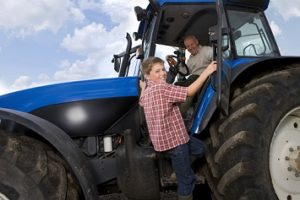In 2017, the National Children’s Center for Rural and Agricultural Health and Safety reported that every 3 days, a child dies in an agricultural-related accident. Of the leading sources of fatalities among all youth, 25 percent involved machinery, 17 percent involved motor vehicles (including all-terrain vehicles (ATVs)), and 16 percent were drownings. For working youth, tractors were the leading cause of fatalities.
For those who need more convincing that farmwork poses life-threatening risks to youth, the Children’s Center noted that from 2003 to 2010, among workers younger than 16, the number of fatalities in agriculture was consistently higher than in all nonagricultural industries combined.
“While overall numbers of farm injuries are declining, injuries to household youth [visting youth are the other category] have held steady,” says the Children’s Center.
The Center is funded by the National Institute for Occupational Safety and Health (NIOSH) and, according to NIOSH, “is the only center with an exclusive focus on childhood agricultural safety.” The Center’s main area of concentration is preventing traumatic injuries among children who work, live, or play on farms. Also, the Center develops guidelines that adult farmers should follow to prevent injuries to any youth engaging in agricultural tasks.
Physical and Developmental Ability
According to the Center, there is no task that is more hazardous to a young person than operating a tractor or being in the vicinity of a tractor that is being operated by a youth.
“Youths who are operating tractors before they are physically or developmentally ready contribute to many of these incidents,” says the Center. “For instance, this past spring, a 10-year-old Kansas girl operating a tractor ran over her 9-year-old brother.”
The Center offers the following Agricultural Youth Work Guidelines that can help parents and supervisors determine if a youth has the physical and cognitive abilities to operate a tractor on a farm.
Youth Qualifications
Youths must be able to do/have all of the following to operate a tractor safely:
- Reach and operate controls while wearing a seat belt.
- Have the strength to repeatedly operate controls.
- Be tall enough to have a good field of vision when seated on a tractor.
- Understand and consistently repeat a 10-step process (i.e., 10 steps required to do the job properly and safely).
- Recognize a hazard, problem solve, and respond appropriately.
- React quickly to hazards.
- Be mature enough to consistently do what is expected.
- Think through actions and consequences before acting.
- Avoid loose clothing and clothing with strings; tie back long hair.
- Safely demonstrate the job four to five times.
- Maintain a two-way communication link.
Adult Responsibilities
Adult responsibilities include:
- Ensuring the tractor is sized appropriately for youths. Youths must be 16+ years to drive an articulated tractor.
- Ensuring the tractor is mechanically sound and safety features are in place, including rollover protection structures.
- Reviewing developmental guidelines to verify the youth’s ability to operate a tractor.
- Demonstrating how to safely drive a tractor.
- Providing appropriate training.
- Educating youths to mount a tractor using three points of contact.
- Ensuring the work area is free from as many hazards as possible.
- Educating youth on avoiding/addressing remaining hazards.
- Ensuring youths do not operate a tractor after dark/in bad weather.
- Training youth to call an adult if equipment malfunctions.

